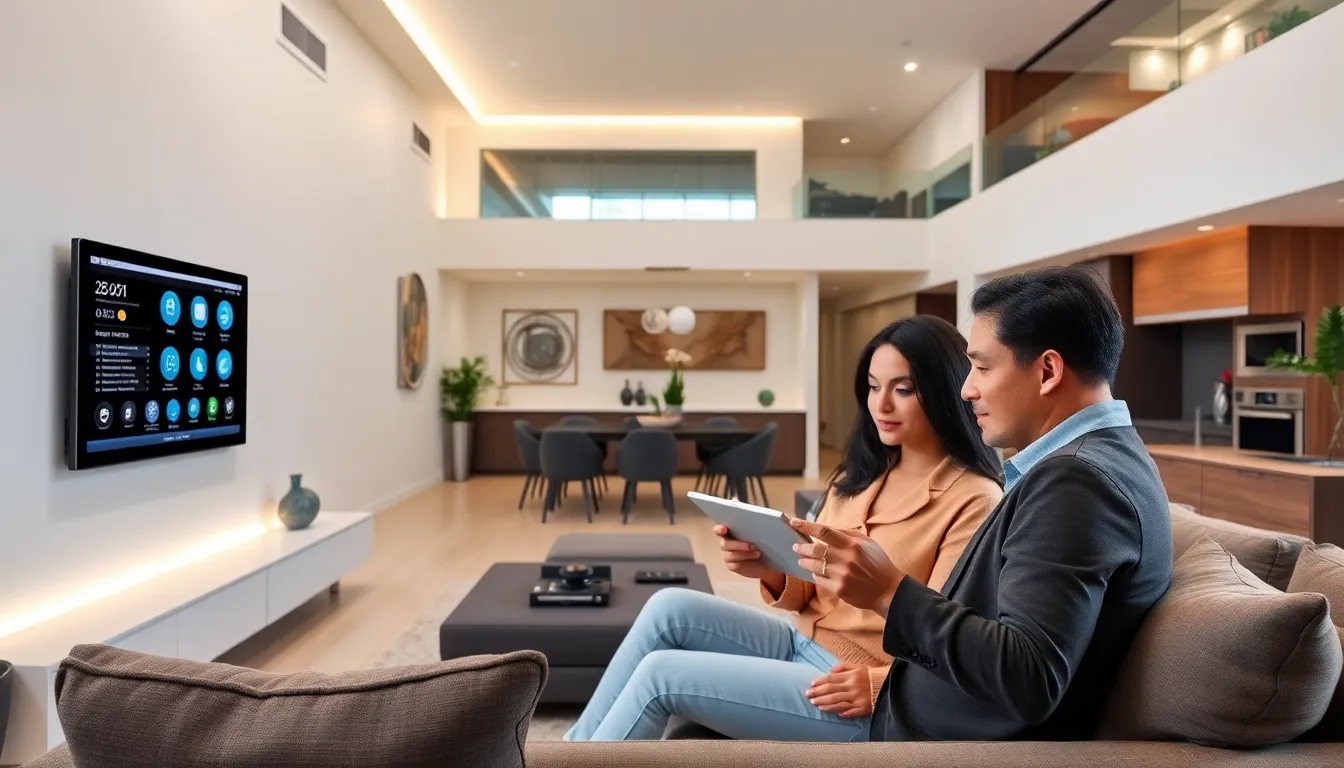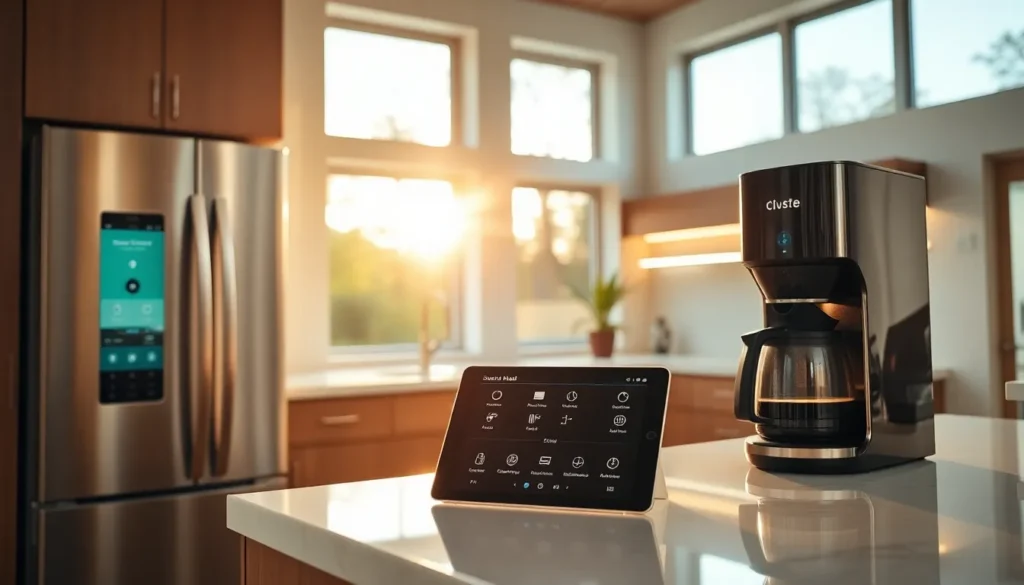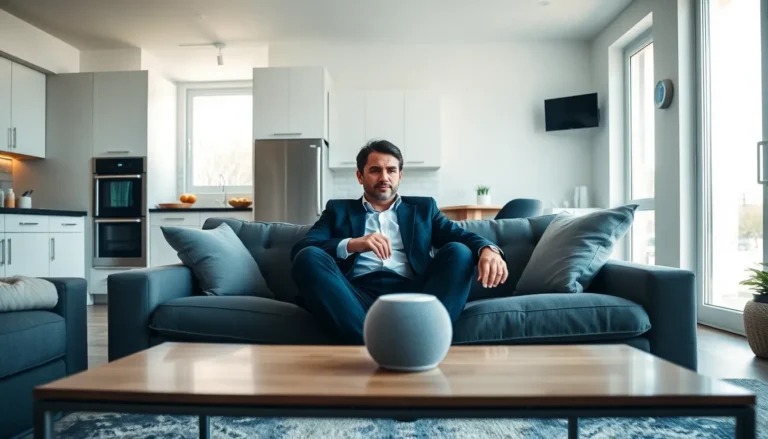Picture this: you wake up to the gentle glow of your coffee maker automatically brewing your favorite blend while your blinds gradually rise, letting in just the right amount of morning sunshine. Welcome to the world of custom smart homes, where technology caters to your every whim, making life both simpler and more enjoyable. This isn’t just a trend: it’s the future of modern living, where homes are no longer mere shelters but personalized sanctuaries filled with smart solutions that adapt to your lifestyle. Buckle up, because this article will dive deep into the components, benefits, and challenges of creating your very own smart haven.
Table of Contents
ToggleUnderstanding Custom Smart Homes

Custom smart homes are a reflection of one’s personal needs and preferences, integrating technology that goes beyond basic automation. Unlike standard smart homes that may feature off-the-shelf gadgets, custom smart homes are tailored to fit the exact desires of the homeowner. Think of it as crafting a bespoke suit versus buying something off the rack. As advancements in technology become increasingly sophisticated, homeowners now have the power to create environments that align precisely with their routines and habits, marrying comfort with convenience.
The Evolution of Smart Homes
The concept of smart homes isn’t new. In the 1960s, people began envisioning connected technologies. Fast forward to today, advancements in Internet of Things (IoT) devices have made it possible to synchronize day-to-day tasks seamlessly. Devices can communicate with one another, offering a level of integration and control unheard of just a few decades ago.
What truly makes a home ‘custom’ lies in the degree of personalization. A homeowner may choose to invest in a central hub that connects everything from lighting and security systems to kitchen gadgets, resulting in a holistic approach to home management. And when problems arise, automation often allows for quick fixes, like regulating a thermostat or resetting security codes, all executed from your smartphone.
Key Components of a Custom Smart Home
Understanding the components that make up a custom smart home is critical. Each element plays a vital role in creating an integrated, responsive living environment. Here are the essential components:
- Central Hub: The brain of the operation. This device communicates with all other smart devices within the home, enabling streamlined control through a single interface.
- Smart Lighting: From dimmable LEDs to color-changing bulbs, smart lighting allows homeowners to set the ambiance and energy levels according to their mood. Imagine unwinding in a soft, warm glow after a long day.
- Smart Security: Home security has evolved significantly. Systems featuring cameras, doorbell monitors, and motion sensors provide homeowners with peace of mind. They can monitor their properties in real-time from anywhere.
- Automated Climate Control: Smart thermostats learn the homeowner’s habits over time, identifying temperature preferences and adjusting accordingly. Everyone feels comfortable without lifting a finger.
- Smart Appliances: Innovations have also crept into our kitchens and laundry rooms. Smart refrigerators can alert homeowners when supplies are low, while washing machines can be controlled via smartphone, because who has time to push buttons?
- Home Entertainment Systems: Don’t forget the joy of an immersive entertainment experience. Smart TVs, music streaming devices, and speakers can be synchronized, creating a living space that caters to both relaxation and fun.
Benefits of Custom Smart Homes
The advantages of investing in a custom smart home are numerous. They go beyond convenience and investigate into efficiency and security. Here’s a closer look:
- Enhanced Comfort: A custom smart home is designed with the user in mind, offering personalized settings that cater to individual preferences, from lighting to temperature.
- Energy Efficiency: Many smart devices monitor energy consumption, helping homeowners save on utility bills. Smart thermostats and energy-efficient appliances minimize waste while maximizing productivity.
- Increased Security: Custom solutions like smart locks and surveillance systems ensure advanced security measures. Homeowners can monitor their property remotely, adding an extra layer of safety.
- Time Savings: Automation of routine tasks frees up valuable time. Whether it’s scheduling appliances to run or controlling the home from afar, users find their lives significantly more manageable.
- Future-Proofing: As technology continues to evolve, investing in a custom smart home means staying ahead of the curve. Compatibility with emerging smart devices keeps the home up-to-date with the latest innovations.
Challenges in Custom Smart Home Implementation
While the allure of custom smart homes is enticing, several challenges accompany their implementation. Awareness of these potential hurdles can help homeowners navigate the complexities effectively:
- Cost: Customization comes at a price. While initial investments can be steep, understanding long-term savings from energy efficiency can help ease concerns.
- Complex Integration: Combining different smart devices can pose challenges, particularly when using products from different manufacturers. Not all devices are compatible, which can lead to frustration and inefficiencies.
- Technical Support: Not everyone is a tech expert. Homeowners may find it challenging to troubleshoot issues or connect new devices. Access to reliable technical support becomes essential in these scenarios.
- Privacy Concerns: With great technology comes great responsibility. Homeowners need to remain vigilant about data privacy and security, ensuring devices are safely configured to prevent breaches.
Designing Your Custom Smart Home
Creating a custom smart home isn’t just about choosing devices: it’s about envisioning how these components will work together. Here are some steps to consider:
- Assess Your Needs: Start by identifying what you want from your smart home. Is it security, convenience, or energy savings? Knowing your priorities will guide your selections.
- Choose the Right Devices: Research options thoroughly. Look for devices that best meet your needs while considering integration capabilities across brands.
- Plan Your Layout: The layout of the smart home matters. Consider where devices will be placed and how they will communicate with your central hub. Physical proximity can enhance connectivity.
- Consult Professionals: If the task feels overwhelming, enlist the help of a smart home integration specialist. They can provide valuable insights and tailor a system that meets your requirements effectively.
Future Trends in Smart Home Technology
The future of custom smart homes looks promising, filled with innovations that promote even greater convenience and functionality. Key trends to watch include:
- AI Integration: Artificial intelligence is set to reshape smart homes. Devices will learn more about homeowner preferences, creating even more personalized experiences.
- Enhanced Voice Control: Voice-activated assistants are becoming smarter, enabling complete hands-free control. Soon, homeowners may control every element of their homes with simple voice commands.
- Sustainability Features: As society pushes toward greener living, smart homes will likely incorporate eco-friendly solutions, tracking energy consumption and promoting sustainable practices.
- Interconnectivity: The rise of 5G technology will allow for more connected devices within a smart home, resulting in seamless interoperability between various systems and ensuring a fluid user experience.



